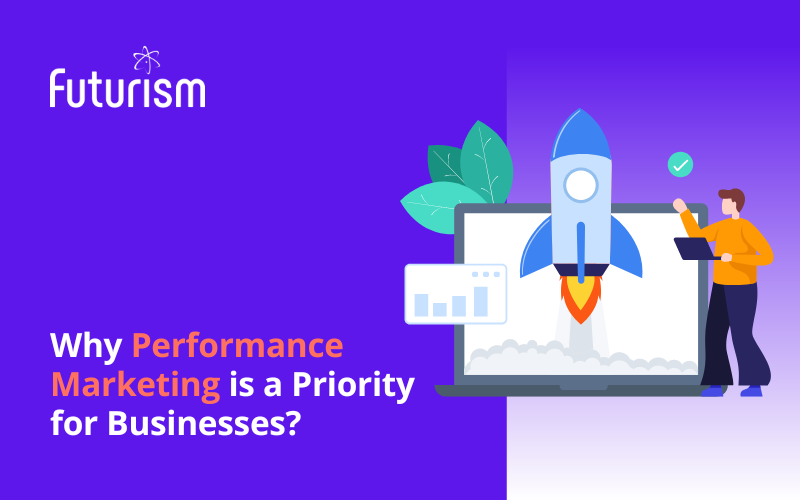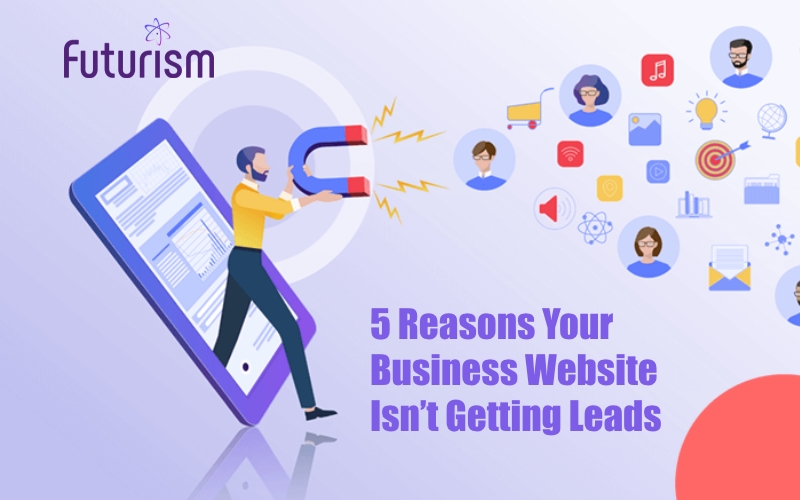Digital Marketing Trends for Manufacturing in 2019

Futurism Technologies
July 22, 2019 - 2.2K
5 Min Read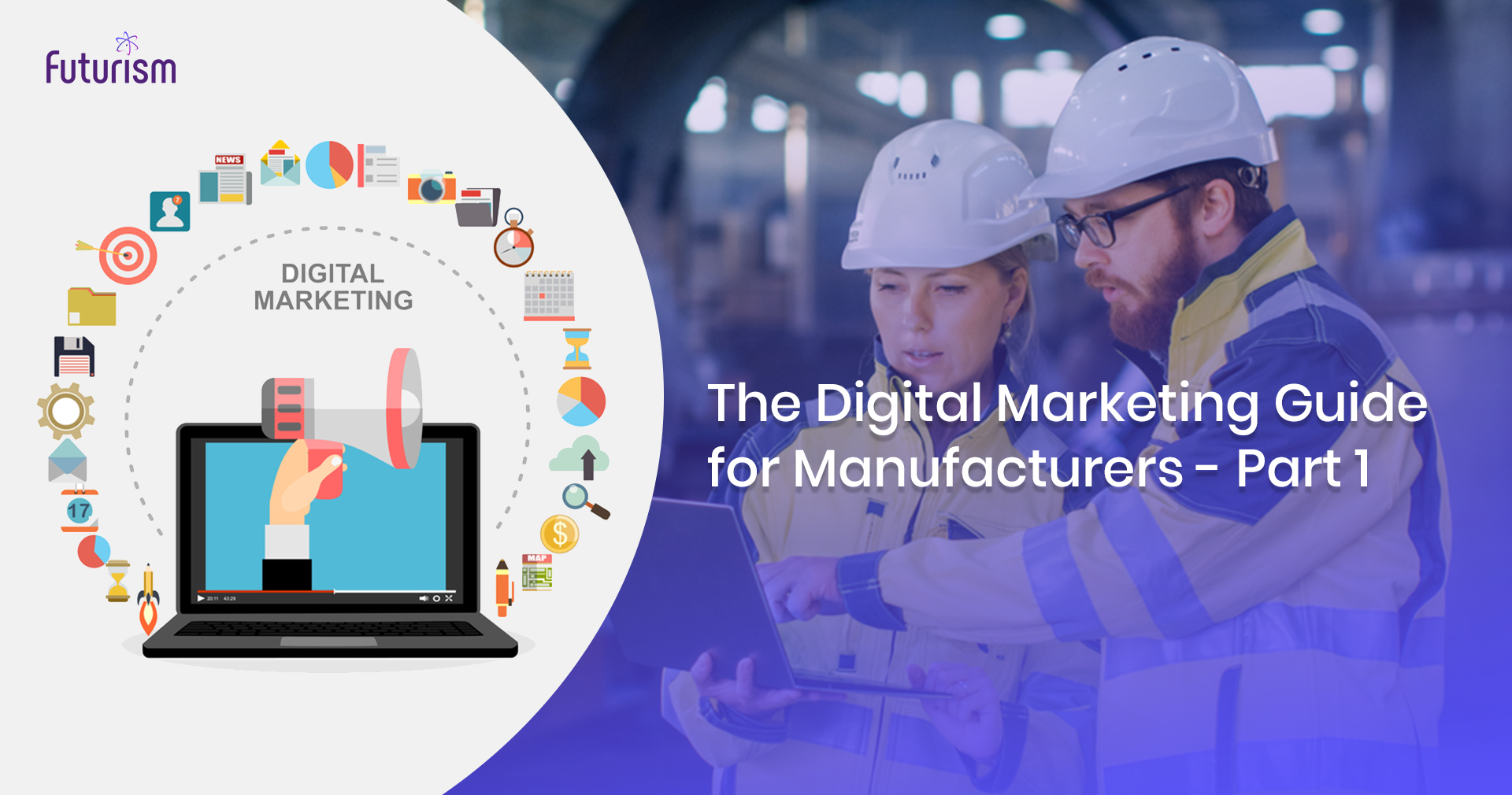
The asphyxiating rate at which digitalization is touching upon all the corners of businesses, virtual communication is going to hold a key in ensuring the steady flow of revenue. It’s an ideal hunting ground for businesses, as this is where the potential customers of most of the businesses dwell. This is especially true for manufacturers who are finding it hard to acquire and retain customers. Growing competition has furthered the struggle of manufacturers. This is where digital marketing, with all the understanding of recent happenings and future trends, can give much-needed thrust to manufacturing marketing activities.
However, the terrain of digitalization is fast-moving. Acing it demands a complete understanding of the direction in which it is all set to move. Depending on our research and detailed conversations with leaders in the manufacturing and marketing sectors, we have come up with four key digital marketing trends for manufacturers.
1) Content Will Still Hold The Great Importance:
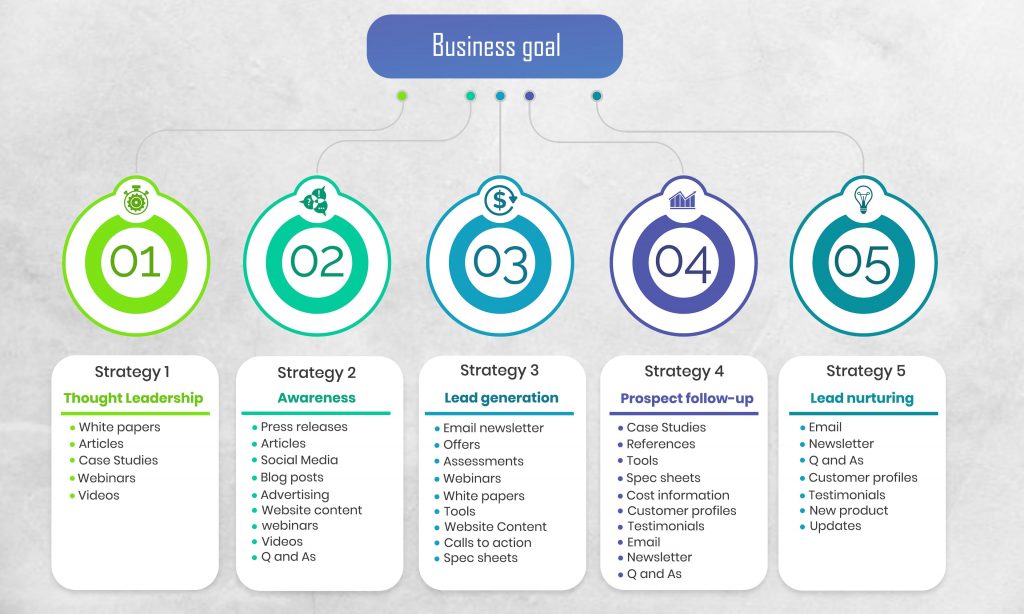
Multiple touchpoints have changed the way people are buying now. Social media channels, print, websites are putting people close to the desired information about the product. That’s precisely why B2B buyers are making their purchase decisions before even talking to anyone at your company. It underlines the need to establish a credible brand persona and thought leadership through insightful and informative white papers, blogs, e-books, and even videos to answer the customers’ questions.
How Can Manufacturers Ace It?
Publish regular, ongoing content like blogs, podcasts, social postings, and videos to fuel customer behavior. Understand that content resonates the most when it prioritizes the audience’s informational needs over a sales message. This is where non-promotional content becomes a vital cog in the marketing machinery.
Manufacturers should come up with a content calendar to make it easy for customers to engage regularly. That’s the only way to turn browsers into subscribers.
2) Proper Targeting Of Customers:
Without segmentation and personalization, qualified leads will be hard to come by. Manufacturers need to target customers who have shown some kind of interest in the offerings. By taking help of customer behavior analysis and tracking, it’s possible to gauge interest levels of potential customers. It may boost the lead generation process by putting your sales representative near the closure of the deal. There is no doubt that this will emerge as one of the most prominent digital marketing trends for manufacturers.
How Can Manufacturers Ace It?
Using data analytics and artificial intelligence, manufacturers can identify and target very specific audiences with accuracy. It can help them distribute the right communication with precision and provide a real-time, tangible opportunity to successfully engage with the right audience.
3) Automated Conversations:
Getting used to the digitalized way of living, customers now prefer frictionless methods throughout the buying journey. That is playing a key role in deciding the customer experience level of a business. Thus, if you are always late in anticipating and instantly answering the questions asked by your customer base, then you are about to fall in the land of oblivion. And specifically, automation will have a significant say here. From automatic email sequences to scheduling regular communication, manufacturers have to establish newer communication lines with customers.
How Can Manufacturers Ace It?
Manufacturers can plan sequences to direct interested prospects to key content and messaging that moves them through the buyer journey.
They must use the automation process to profile and personalize content to the individual customer level.
With the help of Manychat and other Facebook bots, they should respond to customers’ queries instantly and also build subscribers to their Messenger content.
It will enable them to send tailored Facebook Messages to customers instead of an email blast.
4) Bigger And Better Role of Audience Analytics:
Contrary to “spray and pray” approach of older marketing techniques, digital marketing analytics arm you with insight like never before into the mindset and interests of your customers. The numerical analysis helps you understand the gaps that arise while moving customers through conversion steps. As a result, you can spend money more judiciously by focusing on platforms and messages that work.

How Can Manufacturers Ace It?
Know what customers are saying about your brand through social listening and feedbacks that your sales team gets.
Identify the keywords and search terms that they are using to find you.
Through this continuous examination of your audience’s behaviors, you may end up building a system that grows your customer base and thereby your business
Manufacturers should constantly see how customers are responding to their marketing system. It helps in refining the content all the time to move your audience along the sales path and planning marketing touchpoints all along their journey.
However, owning up the entire digital terrain is much more difficult than it appears at surface level. The main reason is its polyphonic nature. The digital ecosystem is made up of multiple elements such as website optimization, social media, SEO, content marketing, and much more. Mastering them with equal ease is not easy. But thinking about each element separately and optimizing it acutely can make the task simpler – and more importantly, effective. Let’s begin with the website.
Website Optimization:
For countless customers, who have never seen any of your executives and who have never visited your store, your website is their first touchpoint to your brand. It can make or break their perception about your brand – something which decided the possibility of the final conversion. Eventually, it does affect your sales funnel. That’s precisely why having a well-optimized website holds immense importance.
Tick mark the circles that apply to your website. The more circles get a tick, the better your website. Your next step should be to fix the issues for any of the circles you left unchecked.
1) Easy Findability
You have original meta descriptions on all pages
Title tags are present on all pages
Page titles are adequately optimized
Title tags & meta descriptions are strategically localized
Alt Text is present on all of the images
There is a sitemap.xml file in the root directory
2) Recommendable Customer Experience
The website gets regular updates
Website is mobile friendly and responsive across multiple devices
Website is browser agnostic
The website does not autoplay a video with its sound turned on
A custom favicon has been loaded in the address bar
The most important information is above the fold on the homepage
We have 404 pages to redirect visitors
3) Landing Pages
The website has specific pages for site visitors to use for requesting more information
Landing pages talk about equipment and capabilities for working with potential customers
The landing page offers a downloadable PDF with more details
There is a provision for collecting leads name, company name, and email address
4) Visual Storytelling
The website has multiple, high-quality product photos of each product, shot from different angles
The website has 360-degree view images of geometrically complex products
All the products have 3D CAD models and 2D drawings
Each product has CAD and BIM data files
There are videos demonstrating the actual functionality of products
There are prominent, branded, and easy-to-understand CTAs
5) Website Performance Measurement
We collect benchmark data from Google Analytics, Google Search Console, etc.
The website regularly goes through HubSpot’s website grader
The website uses a heat-mapping tool like Hotjar or Crazy Egg to track visitor clicks
We regularly evaluate our website data to see what’s working and what’s not
All the website updates are analytics based
Content Marketing for Manufacturers:
Note that business buyers do not contact suppliers directly until 57% of the purchase process is complete. It suggests that before the first contact is made, the buyer has already formed opinions, learned specifications, and narrowed down options without the influence of the manufacturer. That’s why it has become unavoidable to intervene early in the buyer’s journey. Content remains the only efficient way to achieve it, as more than often, people come across your product through advertising or some marketing collateral. Naturally, it can quell all the initial hesitancy of customers by addressing the pressing issues. It’s not a coincidence that CoSchedule says that marketers who document their content strategy are 538% more successful than those who don’t.
Despite this, only 25% of manufacturers have a sound content marketing strategy. It mainly stems from the inability to generate content regularly and lack of understanding of inbound marketing funnel.
Meaning Of the Inbound Marketing Funnel
Like the traditional marketing funnel, inbound marketing funnel varies due to elements such as pricing, your competitive landscape, and business model. Generally, it has three distinct phases — education, evaluation, and conversion.
These phrases echo the way modern buyers buy nowadays. First, they want to know as much about the product and explore more (education); then they try to analyze it (evaluation); and finally, they decide to buy a product (conversion). A fourth stage (delight) comes after buyers make their purchases, and you keep them happy through post-purchase services.
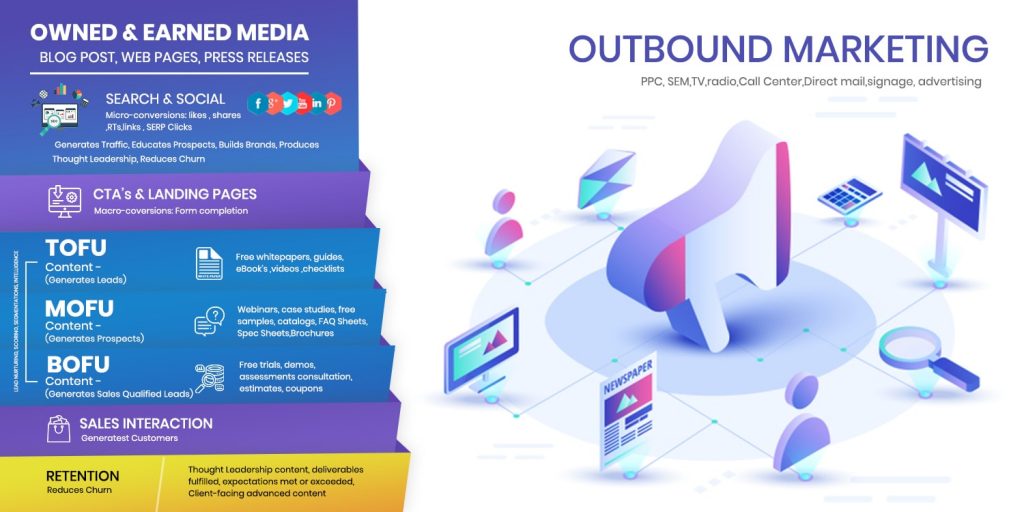
Inbound marketing program should have content that meets the needs of people at all three stages — assisting buyers at the top of the funnel move to the middle, shift those in the middle to the bottom, and turn prospects at the bottom into customers.
We have listed out some content ideas along with the appropriate content forms as per the funnel stage.
A) Top of Funnel Content Ideas
At the top funnel, the aim should be to connect with the visitors who have landed on your website due to organic SEO and smart PPC and SEM programs. Generally, they want authentic and detailed information about specific products and services. Maybe, they are searching for answers to questions, or want a possible fix to a problem that they’re experiencing.
This is where you need to assist them by providing helpful content to become part of your universe of contacts. You can utilize the following content ideas:
1) Blog Posts:
Though blog posts are very common, different posts have different purposes. For top of the funnel buyers, you should provide educational content that converts intricate concepts into useful insights.
2) EBooks:
To give a more detailed view of the topic, an introductory e-book is ideal. You can dig a bit deeper with e-book by elaborating the topic in more detail with the help of images, reports, and examples.
B) Middle of Funnel Content Ideas:
As opposed to the top of the funnel, which is widest, the middle of the funnel is often the deepest. The reason is the evaluation phase takes the longest passage of time – especially for B2B buyers. Here, manufacturers should build on the initial relationship with customers by establishing trust, and starting to substantiate what separates them from their competitors with a variety of content. Through the content, you should provide key and interesting information. Some of the ways of implementing it in the content marketing for manufacturers are as follow:
1) Comparison Guides:
In an era which is marred by too-much-similar products, differentiating solely based on products is extremely difficult. You can gain the much-needed competitive edge by creating a comparison guide that spells out the pros of your product more profoundly – especially in comparison with your competitors’ products.
2) Buyer’s Guides:
As soon as buyers reach closer to the bottom of the funnel, they commence the process of selecting a supplier. You can earn their trust and guide them in the right direction with a step-by-step buying guide.
C) Bottom of Funnel Content Ideas
This is the phase where a buyer is more or less convinced with your product. This is the best chance to convert him/her. You can be little promotional here, but not at the cost of the quality of the content. Here is how you can do it-
1) Product Videos:
Considering that videos now account for about 74% of all online traffic today, videos should be your preferred channel to propagate your message. Thankfully, there are enough tools in the market that let you create a visual representation of your products.
2) Brochures:
At this phase, buyers want to judge your ability to deliver your stated capabilities. Specification sheets and brochures explaining your products and services can serve that purpose perfectly. If you are a maker of industrial instruments, you can create detailed brochures and specification sheets for their different product lines.
SEO for Manufacturing is Evolving
As we have discussed earlier, till the time business buyers talk with the supplier, they have performed thorough research on the product. Their go-to method for accomplishing it is to visit the multiple touchpoints of a brand – making SEO for manufacturers almost unavoidable. That’s primarily because it’s the SEO that makes your brand more visible to the eyes of the buyers. This supreme importance of SEO has made us to out a well-oiled SEO strategy for the manufacturers. Here are SEO tips that any manufacturer who wishes to be successful should implement.
1) Start with Your Audience:
Unless and until SEO efforts are targeted, they won’t yield many benefits to the manufacturers. That’s because the buyers you want to attract are from consumers that are the target of other industries’ SEO efforts.
That’s where audience analysis shines with greater importance. It enables you to go beyond demographic analysis and develop a personalized profile of ideal buyers. In addition, you can understand your audience’s pain points, which in turn can shape your SEO strategy.
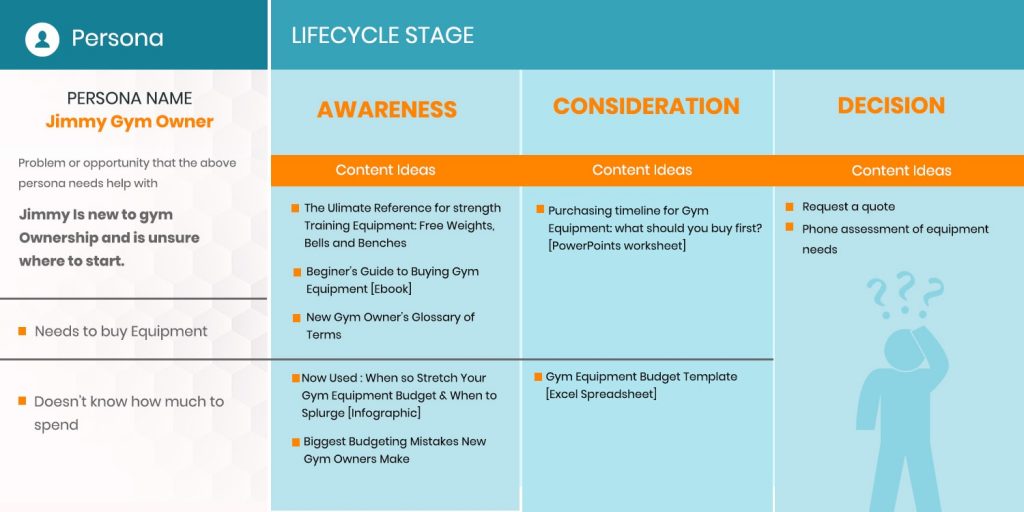
2) Select The Right Keywords:
As keywords make it possible for people to find your website, they find the kernel of your SEO strategy. That’s why it becomes extremely important to select keywords after creating buyer personas and identifying their wants, needs, and motives. Ignoring it may result in reduced traffic on your website. Your keywords should reflect the terms and phrases that people are using while they are in a search mode. Without this, it’s hard to be on the top of the search engine results pages (SERP).
Note that generally, short-tail keywords have high search volume and high competition. However, problem with them is that it’s hard to gauge the user intent behind them. For example, a search for “industrial equipment” may have multiple motivations behind it like –
Researching industrial equipment
Purchasing industrial equipment
Understanding industrial equipment types
Maintaining industrial equipment
Repairing industrial equipment
Operating industrial equipment
Selling industrial equipment
That’s why sometimes it’s better to use long-tail keywords. Instead of using
“industrial equipment”, SEO for manufacturer’s strategy can narrow its focus. You
should target the most valuable keywords first, and then move on to the less
valuable ones.
3) Metadata Optimization:
Metadata is nothing but a snippet of code hidden within the header of a webpage that allows search engines to comprehend the genesis of your page. Note that Google wants to showcase the most relevant pages all the time, and metadata enables search engines to know that your page has what users are looking for. Since the manufacturing sector since the segment is becoming increasingly competitive. Optimizing metadata means a lot.
This is how meta titles look –

4) Eliminate 404 Pages:
A 404 error pops up when users try to navigate to a page on your site that does not exist. It may also occur if you have deleted pages or products on your website. Note that it doesn’t just damage the user experience. In case Google indexes more 404 pages, it shows that your website isn’t functioning well, which can hurt your search engine rankings.
You can overcome this problem by creating a 301 redirect. It directs users and search engines to another webpage.
5) Quantify The Lead Generation:
Like every other marketing activity, SEO should be measurable. Without setting up the proper performance indices, it’s hard to measure the possible effectiveness of the SEO efforts.
Unlike other industries, the manufacturing industry should implement improved key performance indicators. One can be a total generated number of new leads and prospects. Before commencing any marketing collateral, thus, it’s important to know how many leads this post/keyword will generate. Using Google Analytics and HubSpot tools, you can make a direct connection between both variables.
Social Media for Manufacturing Companies
With a number of worldwide users is expected to reach some 3.02 billion monthly active social media users by 2021, and on an average, Americans spending over 300 minutes a week on social media, there is no doubt that social media has become the place where your target audience resides. But, it’s important to note that not all social media platforms are created the same. Facebook is more of a place where people expose their personal lives to others, while Twitter mostly acts as a megaphone to celebrities. LinkedIn was designed specifically as a meet-up platform where professionals could strengthen their networking.
Clearly, different platforms exist because each one specializes in different kinds of content and different interactions. For the industrial manufacturing industry, which isn’t recognized for offering products that ensure general buzz, it’s extremely important to know which outlet has the best results. And this inability to identify the right platform and its right use is precisely what has created the chasm between manufactures and social media. That’s understandable as the possibility of wasting time and money on an ineffective social media channel scares away many manufacturers.
To help you out, we have come up with the proven ways through which manufacturers can ace the art of social media.
A) Creating Thought Leadership:
Note that social media was not meant to be a sales tool. This is the prime reason why studies have found that people come to Twitter to “discover something new and interesting. Clearly, social media content needs to be engaging as well as helpful to potential buyers.
There is no prize for guessing that people are in a constant search for quality information. That’s where your content should become more than a mere sales pitch. You should talk about your vision for the manufacturing process, the future trends, challenges that harm most of the manufacturers. It’s then east to understand why 69% are developing loyal fans for their brands via social media marketing. The Roden Group shows how to do it.
B) Boost The Networking:
Though tradeshows are still effective ways of boosting your network base, they eat up a lot of time and money. Also, they are extremely hard to scale. Social media quells these issues, as it came into existence with the purpose of letting people communicate with each other.
Moreover, with the help of multiple networking groups, it makes connections with contacts who would be difficult to reach offline. One such example is of the Society of Manufacturing Engineers (SME) group on Twitter. With more than 49,000 followers and regular discussions on important issues, you can give a boost to your network.
C) Display Your Capabilities:
Due to its audiovisual nature, social media is a great platform to showcase your capabilities. As people only remember about 10% of the information they hear three days later and that number jumps to 65% of the material when the same information gets combined with a relevant image, visual storytelling should become the de-facto way for manufacturing marketers.
D) Website Traffic Utilization:
If you aren’t on Google, you don’t exist for your potential customers. That’s why becoming discoverable shines with incredible importance. Social media posts can prove helpful in this context, as both Moz and Searchmetrics give Facebook and Google+ significant importance in their annual search engine data correlation studies.
Well executed and strategically distributed promotional posts, which are not overly “salesly”, can drive enough website traffic. Note that 23.39% of website referral traffic comes from Facebook. Clearly, your potential customers will be engaged through your posts, albeit if you give them a compelling reason to do so.
Selecting the Right Digital Marketing Agency

Now, after analyzing the various facets that form the structure of digital marketing, the next step is to select the right digital marketing agency. This seemingly simple act may prove extremely hard – especially due to the overcrowded scenario of digital marketers. Note that even if agencies can handle other businesses, a one size fits all method does not work for the manufacturing industry. A thorough background checking of the selected agencies, thus, becomes of vital importance.
Here are the five critical steps you should implement while selecting a digital marketing agency for manufacturers.
1) Look For The Specialization:
The most important thing is the agency which you would choose should have the specialties to meet your business goals. That’s because agencies that cater to various businesses generally create campaigns and strategies that may not prove effective in the manufacturing and industrial sectors. This mismatch with your goals may result in wasted time and money.
However, it doesn’t mean that a car manufacturer should hire an agency that specializes in car marketing. But you should rely on an agency that works specifically in the manufacturing industry from a marketing perspective. In that case, the agency can quickly move from the research phase of the marketing process to the implementation phase. Consequently, it will start giving you results much faster.
2) Identify the Capabilities:
Generally, agencies have a certain domain of services where they specialize. You may come across website design agencies that offer marketing services in addition. Though it’s not right to reject them squarely, selecting them may prove costly. That’s because digital marketing always stands on the verge of change. It’s important to hire an agency that keeps itself abreast with the current happenings in the digital marketing world. The agency that offers digital marketing as add-ons may not be the right one.
Note that manufacturing companies get business from OEMs by offering a value proposition that they can become a single source. As most of the OEMs are on LinkedIn, social media management will work for you only if the agency specializes in LinkedIn. Facebook and Twitter aren’t the ideal hunting grounds for manufacturers.
3) Scrutinize The Agency Meticulously:
You can judge the agency based upon what kind of results they have achieved for themselves. Try to take a deeper look into its work, talk to its existing and previous clients, and ask for references. If you want an agency that needs blog management, try to analyze how it runs its own and clients’ blogs. If you are looking for an agency that specializes in SEO, see where it ranks in search for terms in its industry.

4) Gauge the Monitoring Skills of the Agency
If you can’t measure it, you can’t manage it. Hiring a digital marketing agency doesn’t breach this axiom. And without scientific means of collecting and analyzing data. That’s why you should have a complete understanding of each potential marketing partner’s approach to the following –
1. Tools: See what kind of tools and software the agency uses across different digital marketing channels and tactics
2. Metrics: Identify the performance metrics that the agency monitor.
3. Expertise: The best tools and metrics will mean nothing if the right people are not at the helm. Try to know more about the people who will be working on your account, including details such as certifications, credentials, and hands-on experience.
4. Reporting: Transparency is key to any successful partnership. The agency should keep you in the loop regularly about the marketing activities and outcomes. The easiest way of evaluating the reporting ability of an agency is to ask for sample reports related to the services you are interested in.

Subscribe Now!
TRENDING POSTS
-
Futurism Returns to Hannover Messe 2024: Leading the Charge in Industrial and Digital Transformation
-
The Role of Smart Maritime IoT Solutions in Enhancing Maritime Safety
-
Data Integration Unlocked: From Silos to Strategy for Competitive Success
-
Navigating the Shadows: Understanding Zero-Click Attacks in the Digital Age
-
AI Reimagined: Crafting Next-Gen AI Apps with Expert Fine-Tuning
-
Explore Next-Gen Digital Solutions with Futurism at MWC 2024
-
Futurism Unleashes the Technology of Tomorrow at MWC Barcelona 2024
-
Futurism AI: Turning Ideas into Apps at Lightning-Fast Speed
-
Accelerate AI Across Your Enterprise With Futurism AI
-
Futurism to Address the Biggest Security Challenges at RSS 2022
-
Futurism at SelectUSA 2022: Steering the Next Wave of Businesses
-
Futurism to Uplift the MSP Business Community at the MSP Expo 2022
-
Futurism Sets Out to Address the Biggest Security Challenges at the RSA Conference 2022
-
5 Ways to Prepare Your Business for Digital Transformation
-
4 Ways To Win at Digital Transformation on a Shoestring Budget
-
Futurism: Empowering MSPs at the Channel Partners Conference & Expo 2022
-
Why AI in Digital Marketing is the Next Big Thing?
-
Futurism brings ‘Mobile First Digital Transformation’ to the fore at MWC Barcelona 2022
-
Cybersecurity for Rural Hospitals: How can Rural Hospitals become Cyber Smart?
-
Futurism Empowers Rural Health Care Community at the AHA Rural Health Care Leadership Conference
-
The Biggest Problem With Cybersecurity In Healthcare Sector, And How IBM QRadar Can Fix It?
-
How IBM MaaS360 is Revolutionizing Endpoint Security in the Healthcare Industry?
-
Futurism to Present its MSP Partner Program at the Channel Partners Conference & Expo 2021
-
EndPoint Security in Healthcare Matters and IBM MaaS360 Can Help
-
How AI Will Enable Faster Adaptation of Digital Transformation
-
How Is Digital Modernization Important In Supplier On-Boarding?
-
Top 10 Email Marketing Tips for This Holiday Season
-
Benefits of using ERP Software for Energy and Gas Industries






